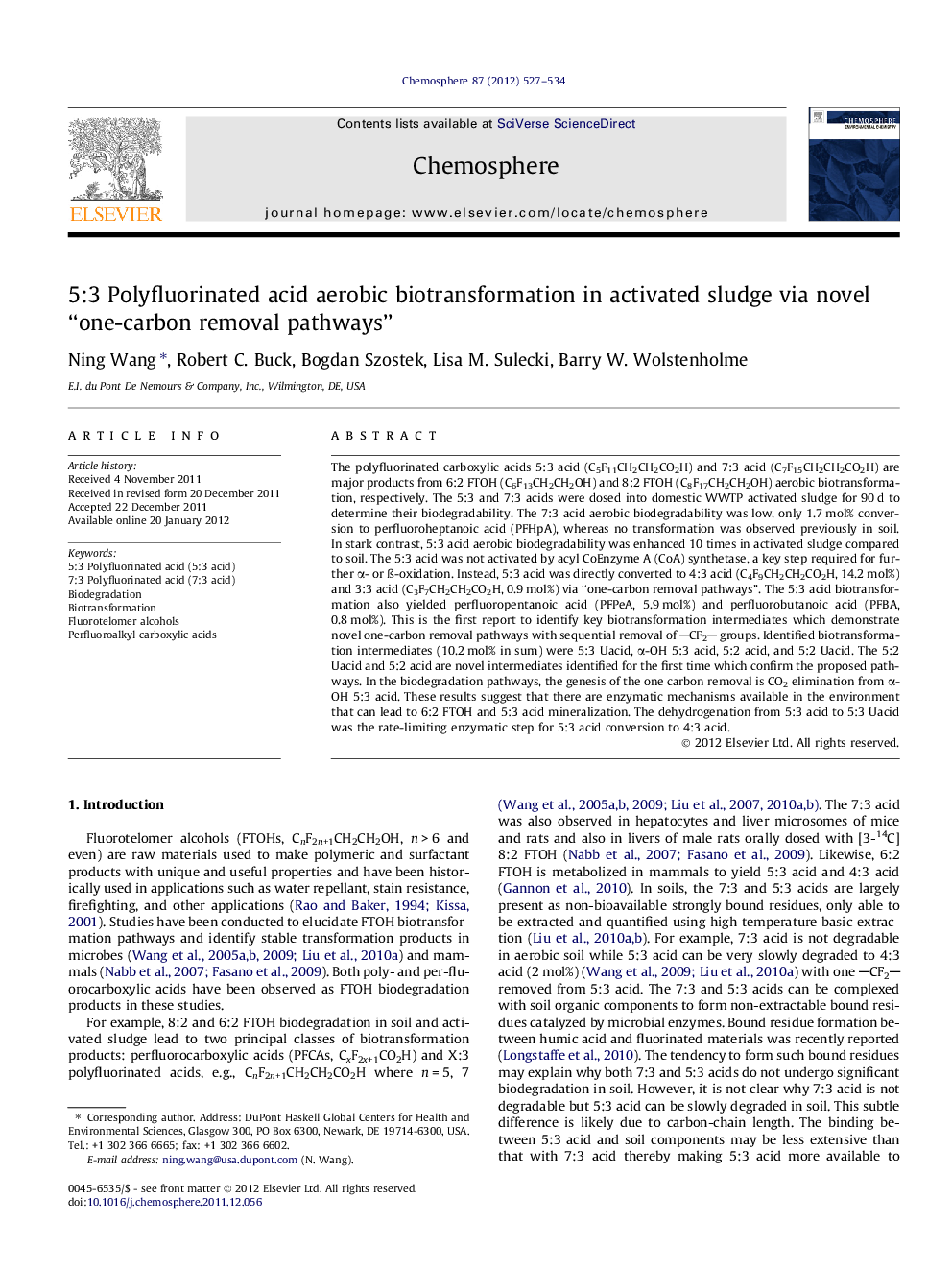| کد مقاله | کد نشریه | سال انتشار | مقاله انگلیسی | نسخه تمام متن |
|---|---|---|---|---|
| 4410223 | 1307534 | 2012 | 8 صفحه PDF | دانلود رایگان |

The polyfluorinated carboxylic acids 5:3 acid (C5F11CH2CH2CO2H) and 7:3 acid (C7F15CH2CH2CO2H) are major products from 6:2 FTOH (C6F13CH2CH2OH) and 8:2 FTOH (C8F17CH2CH2OH) aerobic biotransformation, respectively. The 5:3 and 7:3 acids were dosed into domestic WWTP activated sludge for 90 d to determine their biodegradability. The 7:3 acid aerobic biodegradability was low, only 1.7 mol% conversion to perfluoroheptanoic acid (PFHpA), whereas no transformation was observed previously in soil. In stark contrast, 5:3 acid aerobic biodegradability was enhanced 10 times in activated sludge compared to soil. The 5:3 acid was not activated by acyl CoEnzyme A (CoA) synthetase, a key step required for further α- or ß-oxidation. Instead, 5:3 acid was directly converted to 4:3 acid (C4F9CH2CH2CO2H, 14.2 mol%) and 3:3 acid (C3F7CH2CH2CO2H, 0.9 mol%) via “one-carbon removal pathways”. The 5:3 acid biotransformation also yielded perfluoropentanoic acid (PFPeA, 5.9 mol%) and perfluorobutanoic acid (PFBA, 0.8 mol%). This is the first report to identify key biotransformation intermediates which demonstrate novel one-carbon removal pathways with sequential removal of CF2 groups. Identified biotransformation intermediates (10.2 mol% in sum) were 5:3 Uacid, α-OH 5:3 acid, 5:2 acid, and 5:2 Uacid. The 5:2 Uacid and 5:2 acid are novel intermediates identified for the first time which confirm the proposed pathways. In the biodegradation pathways, the genesis of the one carbon removal is CO2 elimination from α-OH 5:3 acid. These results suggest that there are enzymatic mechanisms available in the environment that can lead to 6:2 FTOH and 5:3 acid mineralization. The dehydrogenation from 5:3 acid to 5:3 Uacid was the rate-limiting enzymatic step for 5:3 acid conversion to 4:3 acid.
► 5:3 acid [F(CF2)5CH2CH2COOH] can be degraded to 4:3 acid via novel “one carbon removal pathways”.
► 5:3 acid biodegradation to 4:3 acid was via direct decarboxylation of α-OH 5:3 acid intermediate.
► Microbial 5:3 acid biodegradation to 4:3 acid may produce up to 6 ATP equivalent of bio-energy.
► 5:3 acid was not able to be activated by an acyl-CoA synthetase to undergo α- or ß-oxidation.
► 5:3 acid dehydrogenation to 5:3 Uacid was the rate-limiting step for 5:3 acid biodegradation.
Journal: Chemosphere - Volume 87, Issue 5, April 2012, Pages 527–534